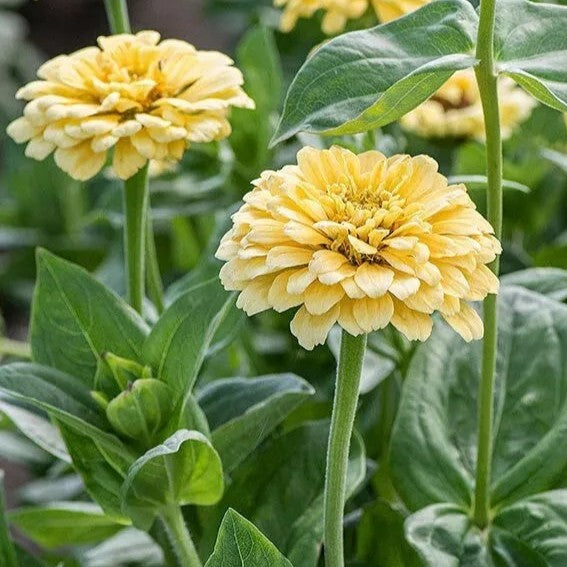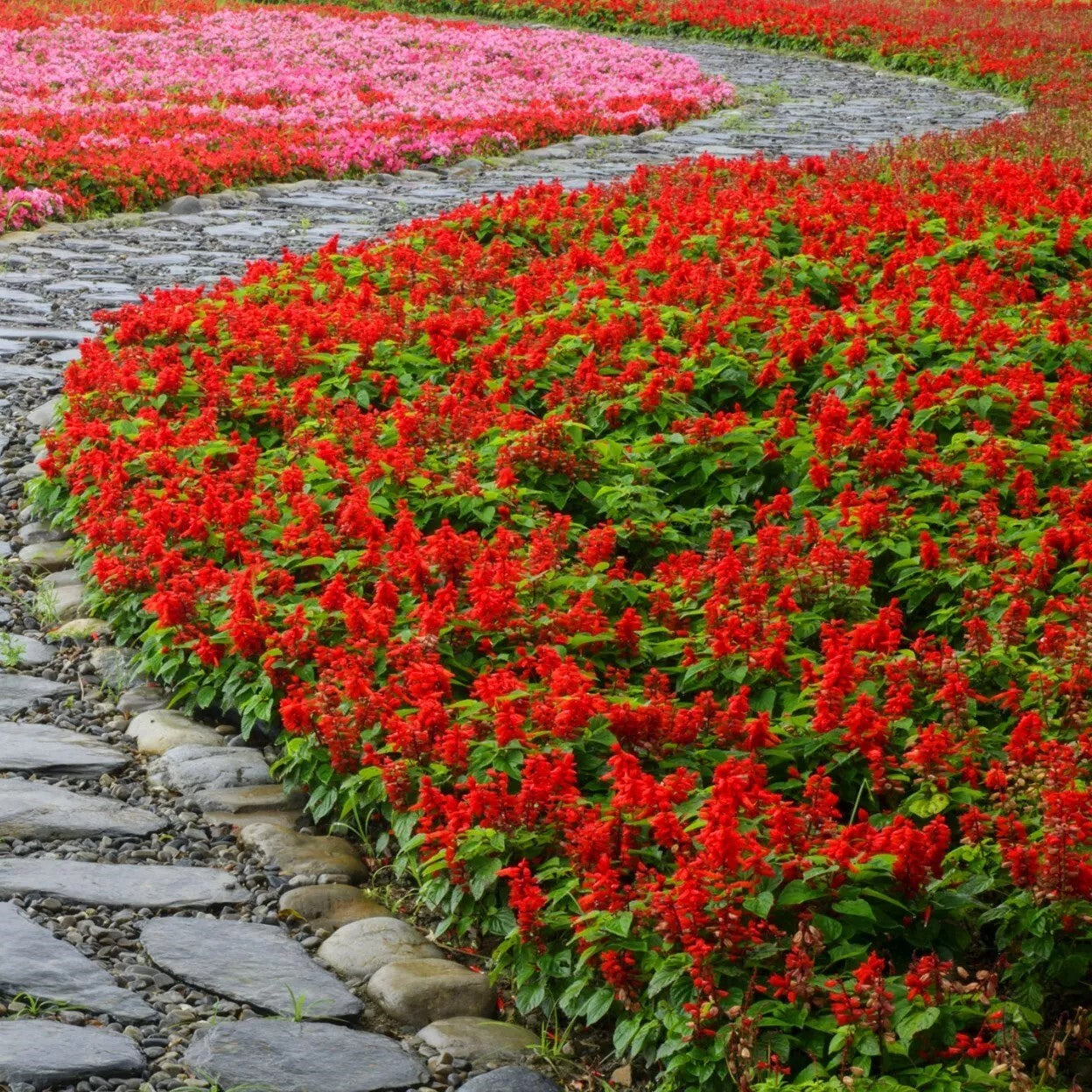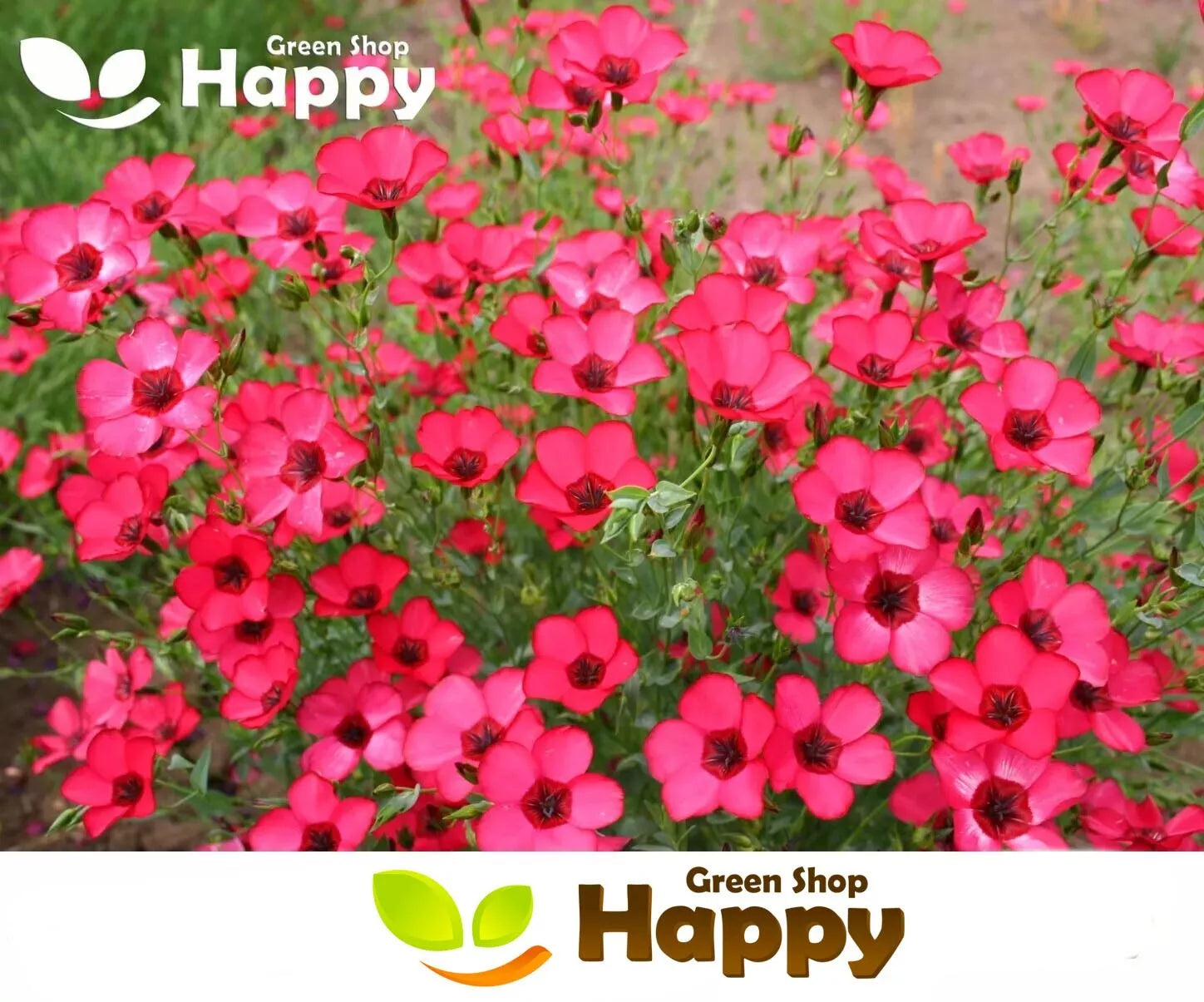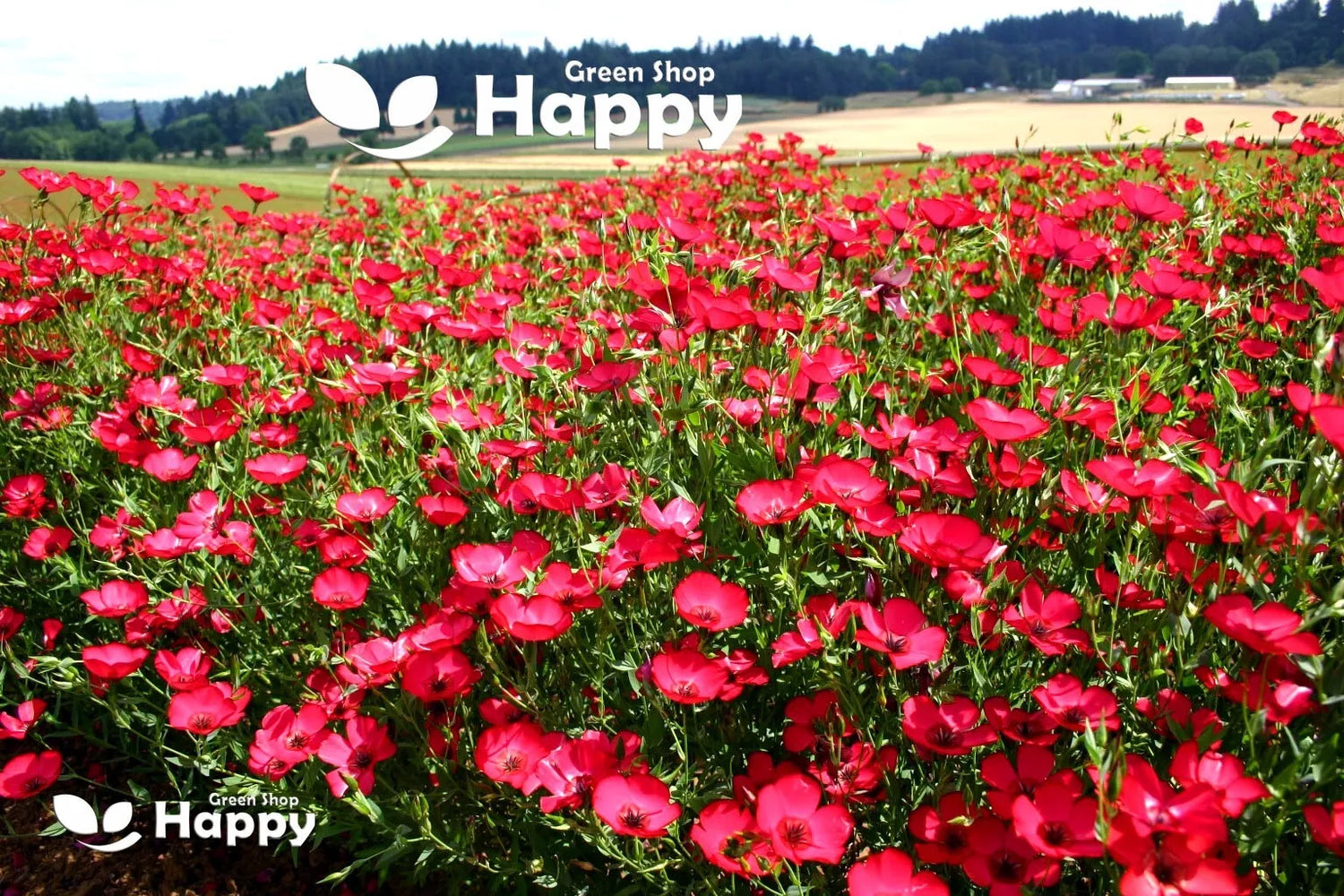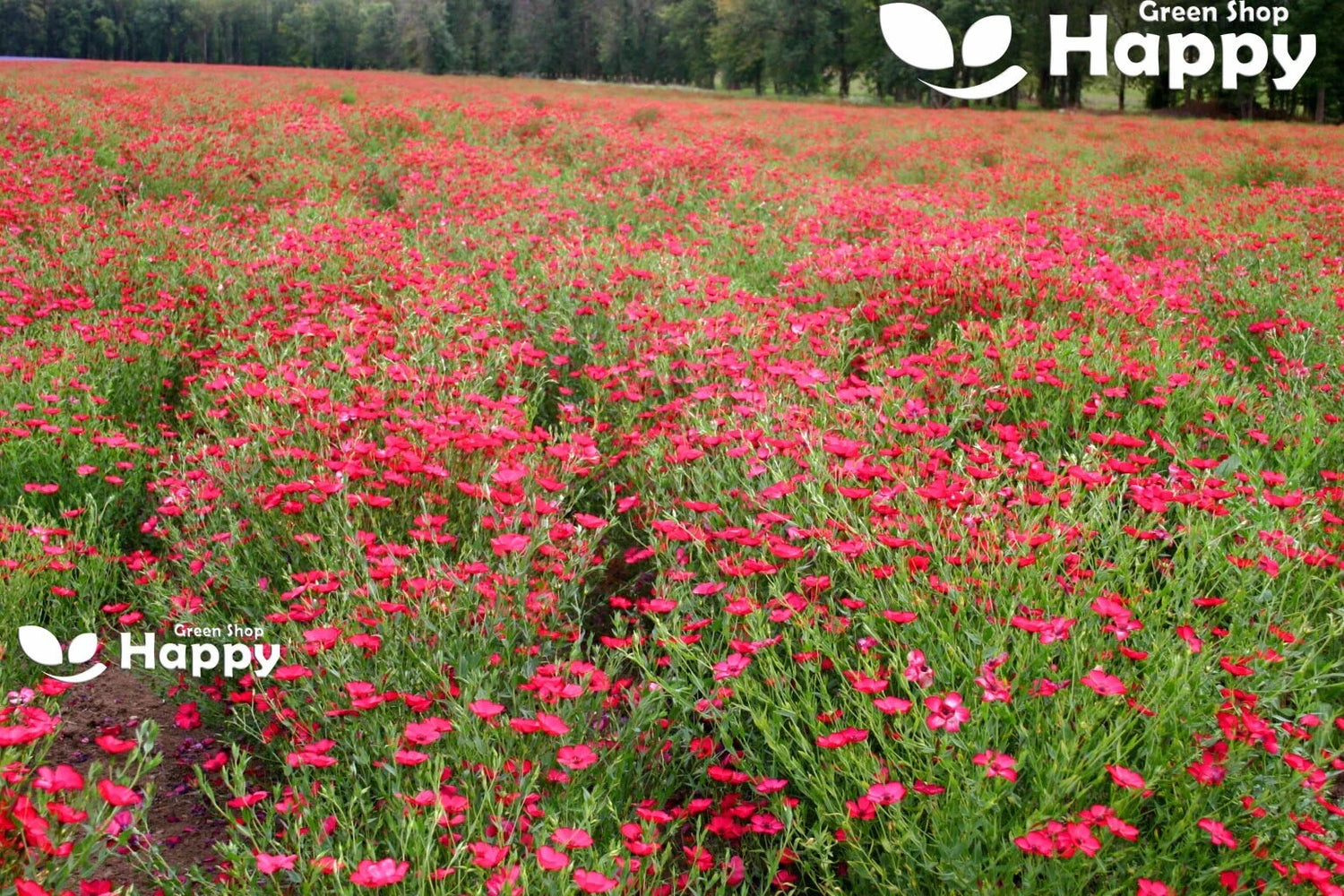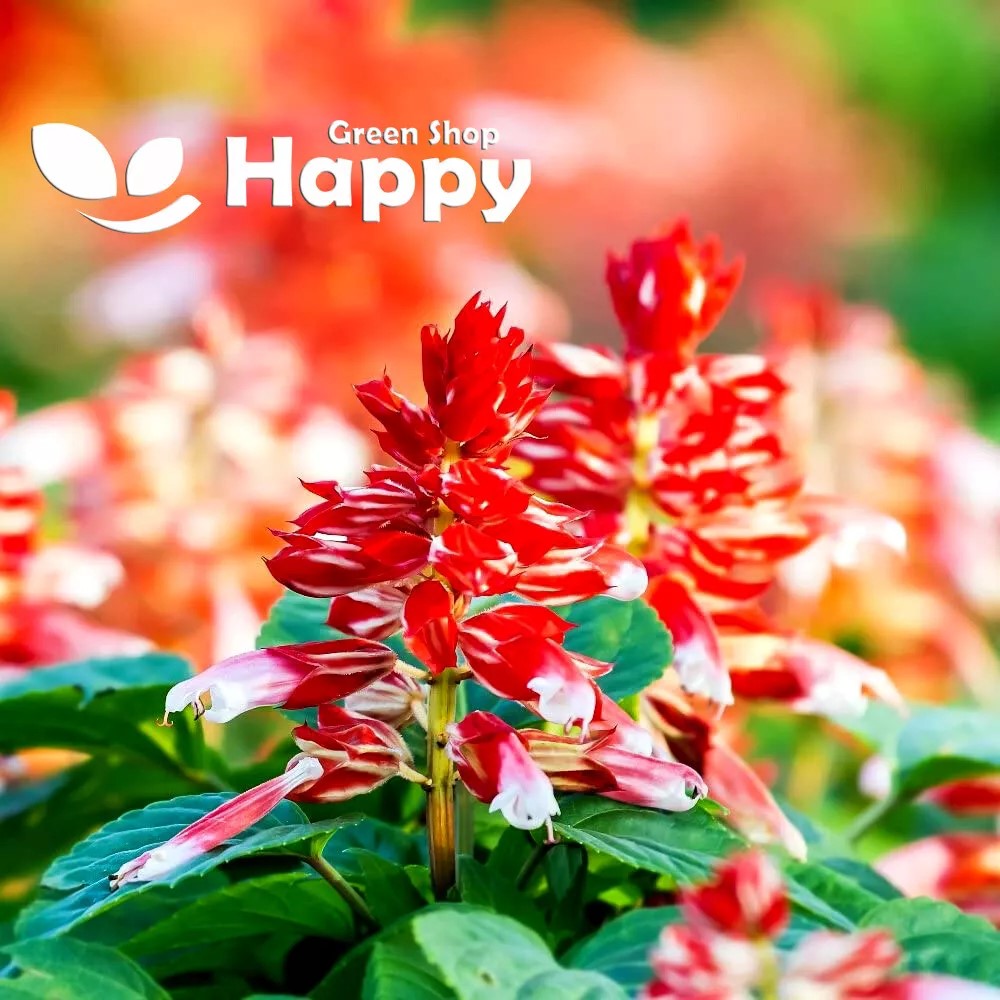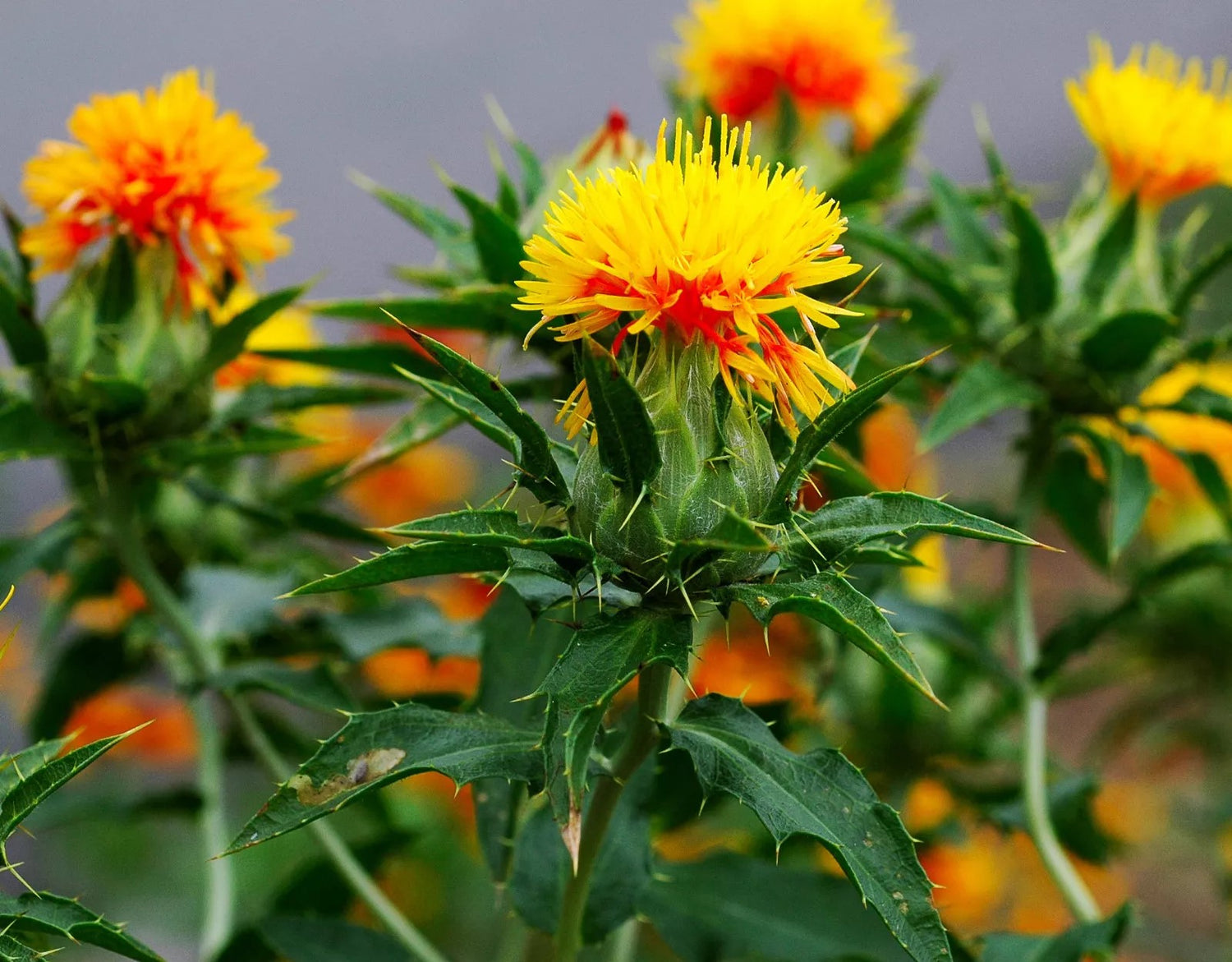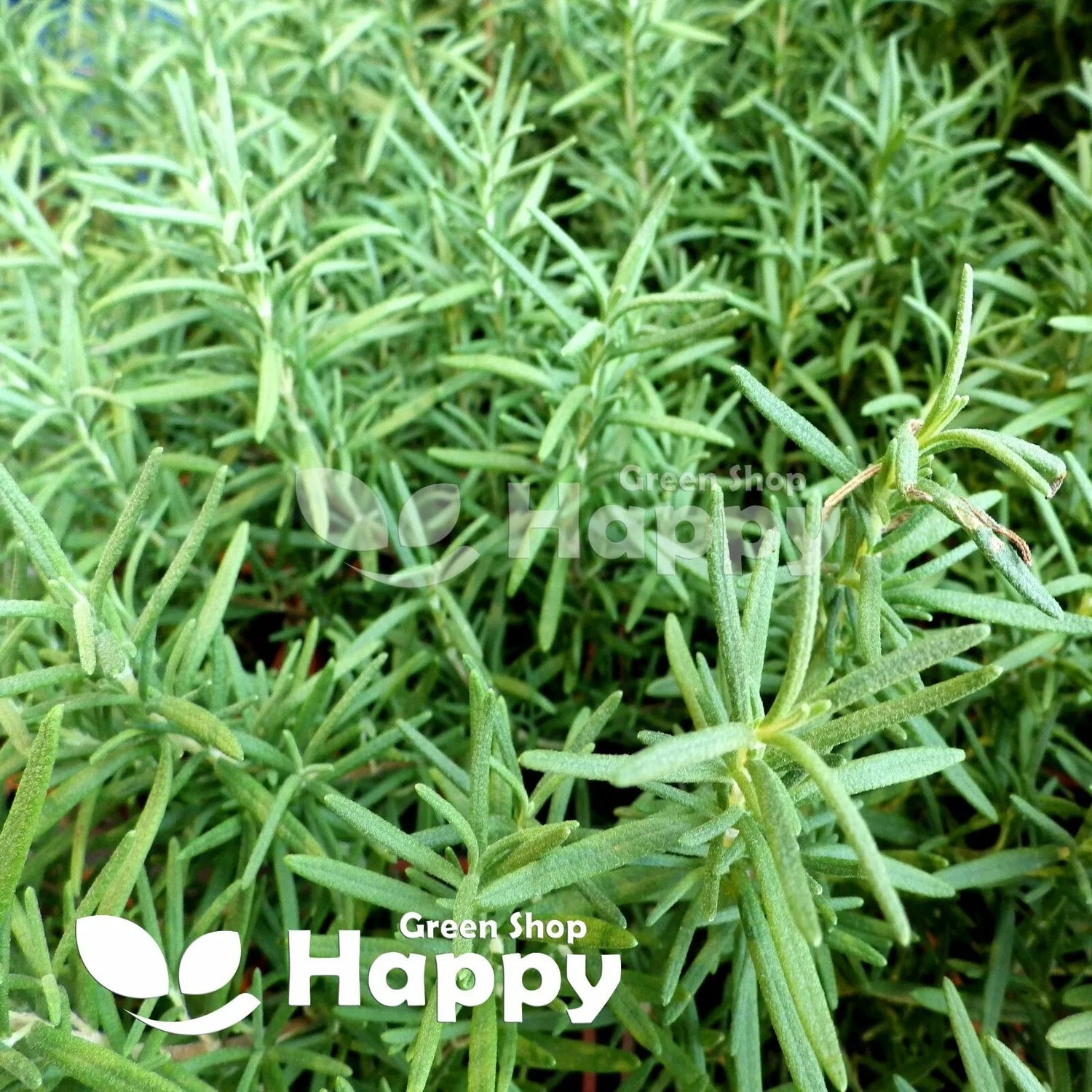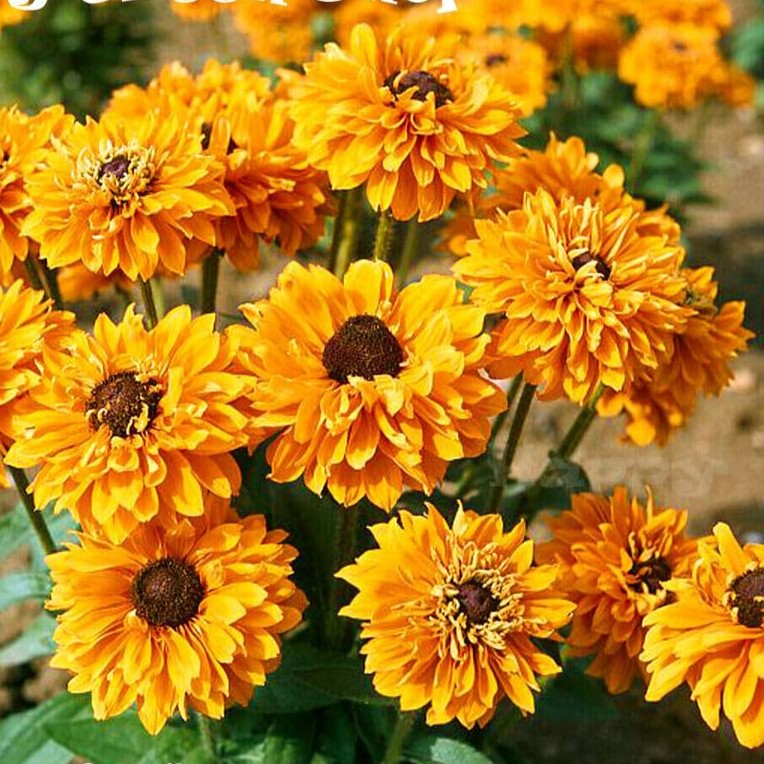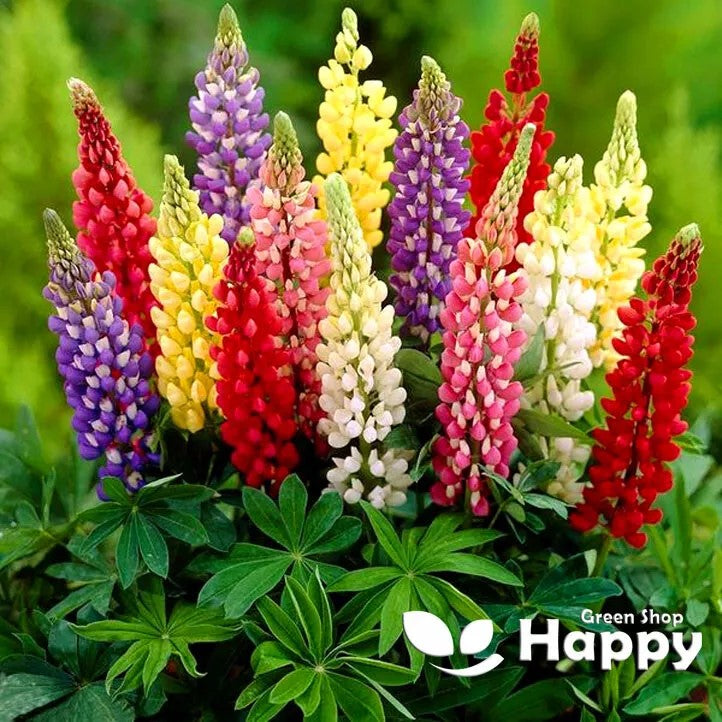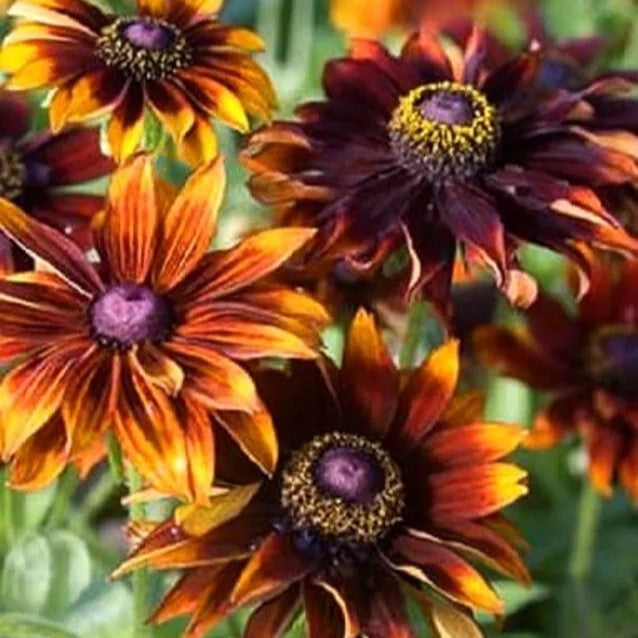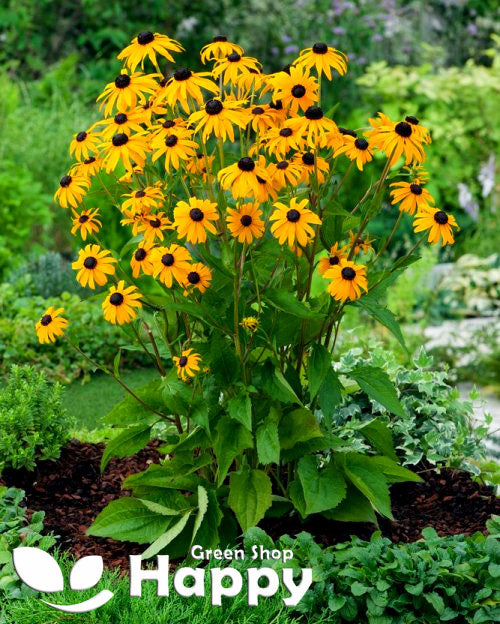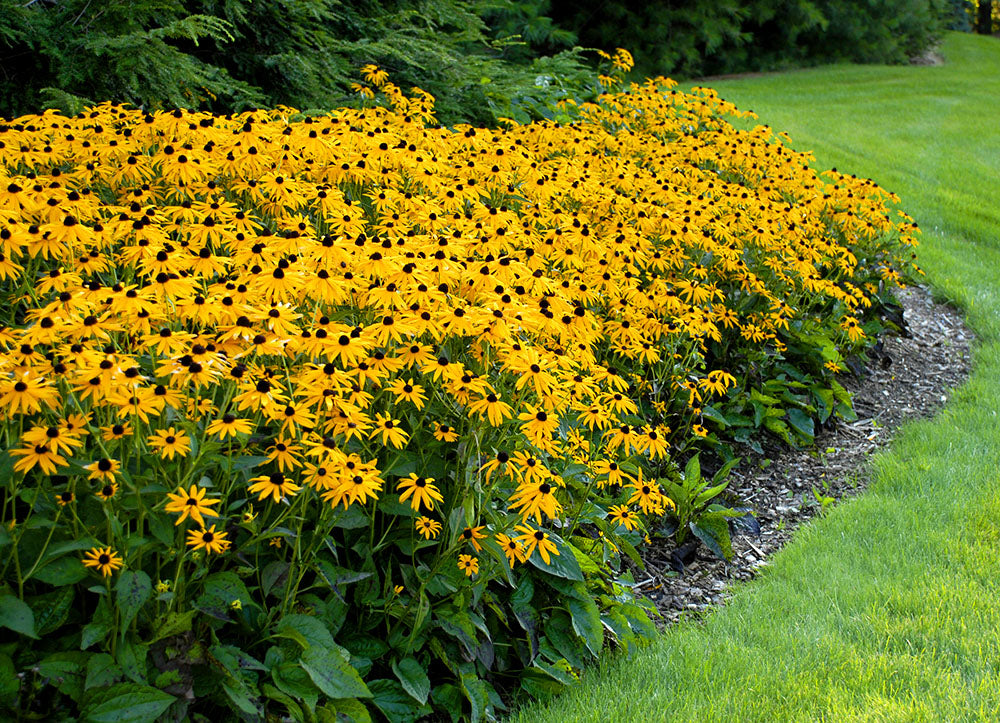Sort by:
326 products
326 products
Scarlet Salvia 'Piccolo' Seeds (Salvia splendens)
Scarlet Salvia 'Piccolo' is a compact, vibrant bedding plant producing bright scarlet spikes that add striking color to borders, containers, and garden beds. Its uniform, dwarf habit makes it perfect for mass plantings, edging, or mixed displays. Easy to grow and long-flowering, it’s a reliable choice for summer color.
What Makes It Special
-
Compact, dwarf habit ideal for small gardens and containers
-
Bright scarlet flower spikes that provide long-lasting color
-
Excellent for mass plantings, borders, and edging
-
Attracts pollinators and adds bold summer interest
Key Features
-
Botanical name: Salvia splendens
-
Variety: 'Piccolo'
-
Seed count: Approx. seeds per pack
-
Height/Spread: 20–30 cm tall, 15–25 cm spread
-
Position: Full sun; fertile, well-drained soil
-
Flowering period: June–September
Ideal For
-
Borders and edging
-
Containers and patio displays
-
Mass bedding schemes
-
Pollinator-friendly gardens
Sowing Instructions
-
When to sow: February–April indoors; March–May outdoors after frost
-
How to sow:
-
Sow seeds thinly on the surface of moist seed compost; press gently
-
Keep at 20–22°C; germination occurs in 10–14 days
-
-
Transplanting: Plant seedlings 20–25 cm apart after frost risk has passed
-
Care: Water moderately; remove faded flowers to encourage continued blooming
Scarlet Flax – Seeds (Linum grandiflorum)
Scarlet Flax (Linum grandiflorum) is an elegant annual producing vibrant scarlet-red flowers on slender, graceful stems. Blooming from early summer to autumn, this low-maintenance plant adds striking color and delicate texture to borders, cottage gardens, and wildflower mixes. Easy to grow and drought-tolerant once established, Scarlet Flax attracts pollinators while providing long-lasting visual interest in sunny garden settings.
Why Grow "Scarlet Flax"
-
Brilliant scarlet-red flowers on slender stems
-
Long flowering season from early summer to autumn
-
Easy-to-grow, low-maintenance annual
-
Pollinator-friendly and drought-tolerant
Key Features
-
Type: Annual (Linum grandiflorum)
-
Height: 30–50 cm
-
Flowering: Early summer to autumn
-
Position: Full sun
-
Uses: Borders, cottage gardens, wildflower mixes, pollinator gardens
Ideal For
-
Adding bright color to borders and mixed beds
-
Cottage and wildflower-style gardens
-
Pollinator-friendly planting schemes
-
Low-maintenance sunny garden spots
Sowing & Growing
-
Sow indoors: February–April in trays or pots
-
Sow outdoors: April–May directly in soil
-
Germination: 10–14 days at 18–22°C
-
Thin seedlings 20–25 cm apart
-
Prefers well-drained soil in full sun
-
Water moderately until established
Sage Red-Orange – Seeds (Salvia splendens)
Sage Red-Orange (Salvia splendens) is a vibrant annual producing striking red-orange spikes of tubular flowers. Blooming from summer to autumn, this heat-tolerant plant adds bold color and vertical interest to borders, containers, and cottage-style gardens. Easy to grow and low-maintenance, it attracts hummingbirds, bees, and butterflies, making it perfect for pollinator-friendly planting and long-lasting summer displays.
Why Grow "Red-Orange Sage"
-
Bold red-orange flower spikes
-
Long flowering season from summer to autumn
-
Easy-to-grow, low-maintenance annual
-
Pollinator-friendly and visually striking
Key Features
-
Type: Annual (Salvia splendens)
-
Height: 40–60 cm
-
Flowering: Summer to autumn
-
Position: Full sun
-
Uses: Borders, containers, cottage gardens, pollinator-friendly beds
Ideal For
-
Adding vertical color to borders and mixed beds
-
Cottage and container gardens
-
Pollinator-friendly garden schemes
-
Summer and autumn garden displays
Sowing & Growing
-
Sow indoors: February–April in trays or pots
-
Sow outdoors: April–May after frost
-
Germination: 10–14 days at 18–22°C
-
Thin seedlings 25–30 cm apart
-
Prefers well-drained soil in full sun
-
Water moderately until established
Saffron Thistle Yellow – 20 Seeds (Carthamus tinctorius)
A striking and unusual garden flower, Saffron Thistle Yellow produces bold, spiky thistle-like blooms in golden-yellow shades that add texture and color to borders. This hardy, sun-loving plant is valued not only for its ornamental appeal but also for its long-lasting cut flowers and historical use as a natural dye and saffron substitute.
What Makes It Special
-
Unique thistle-like blooms in glowing yellow
-
Long vase life – excellent cut flower
-
Drought-tolerant and thrives in poor soils
-
Historically used for natural dyes and coloring
Key Features
-
Hardy annual, height: 60–90 cm
-
Prefers full sun and well-drained soil
-
Tolerates drought and poor ground
-
Flowers June–September
Ideal For
-
Striking borders and wildflower gardens
-
Cut flower arrangements and drying
-
Pollinator-friendly planting
-
Low-maintenance, sun-baked spots
Sowing
-
Sow directly outdoors Mar–May in well-drained soil, spacing 25–30 cm apart
-
Cover lightly with soil and water well
-
Germination: 7–21 days
-
Thin seedlings as they grow for stronger plants
Russian Tarragon – Seeds (Artemisia dracunculus)
Russian Tarragon is a hardy perennial herb valued for its anise-like flavor and aromatic leaves. While milder than French tarragon, it grows easily from seed, making it an excellent choice for gardeners who want a reliable and vigorous herb. Perfect for flavoring chicken, fish, salads, and sauces, it also makes a decorative addition to herb gardens with its fine, slender foliage.
How to Grow
-
Sow indoors: March – May in seed trays or pots.
-
Transplant outdoors: After last frost into a sunny, sheltered position.
-
Soil: Well-drained, light soil.
-
Spacing: 30–45 cm apart.
-
Water moderately, avoid waterlogging.
Key Features
-
Hardy perennial, easy to grow from seed
-
Aromatic leaves with mild anise flavor
-
Reliable alternative to French tarragon
-
Drought-tolerant once established
-
Attractive foliage for herb borders
Ideal For
-
Herb gardens and kitchen gardens
-
Flavoring chicken, fish, soups, and sauces
-
Growing in pots, raised beds, or borders
Sowing & Harvest
-
Sow: March – May
-
Harvest: July – October
Quick Tip
Pinch back growing tips to encourage bushy growth. For best flavor, harvest young leaves before flowering.
Rudbeckia ‘Goldilocks’ – 300 Seeds (Rudbeckia hirta)
Rudbeckia ‘Goldilocks’ is a cheerful annual that produces abundant bright golden-yellow daisy-like flowers with dark centers. Compact and free-flowering, it is perfect for borders, cottage gardens, and pollinator-friendly plantings. Its long-lasting blooms attract bees and butterflies, bringing vibrant summer color and wildlife interest to any garden.
Why Grow Rudbeckia ‘Goldilocks’?
-
Bright golden-yellow daisy-like blooms with dark centers
-
Compact, bushy growth ideal for borders and containers
-
Long-flowering, from summer into early autumn
-
Attracts pollinators such as bees and butterflies
Key Features
-
Type: Annual flower
-
Height: 40–50 cm
-
Spread: 30–40 cm
-
Flowering: July–October
-
Position: Full sun
-
Soil: Well-drained, moderately fertile
Ideal For
-
Borders and flower beds
-
Cottage and wildflower gardens
-
Pollinator-friendly landscapes
-
Containers and small gardens
Sowing & Growing
-
Sow indoors: March–April in trays or pots, lightly cover seeds
-
Germination: 7–14 days at 18–20°C
-
Transplant outdoors: After frost risk has passed, spacing 30 cm apart
-
Direct sow outdoors: April–May
-
Deadhead spent flowers to encourage continuous blooming
Russell Lupine ‘Minarette Dwarf’ Mix – Seeds (Lupinus polyphyllus)
Russell Lupine ‘Minarette Dwarf’ Mix (Lupinus polyphyllus) is a charming, compact perennial producing dense, colorful spikes of pea-like flowers in a mix of vibrant shades. Blooming from late spring to early summer, this dwarf variety adds vertical interest and long-lasting color to borders, rock gardens, and cottage-style beds. Hardy, low-maintenance, and pollinator-friendly, it attracts bees and butterflies while brightening any garden space with its bold blooms.
Why Grow "Minarette Dwarf"
-
Dense, colorful flower spikes in vibrant shades
-
Long flowering season from late spring to early summer
-
Compact, hardy, and low-maintenance perennial
-
Pollinator-friendly and perfect for mixed borders
Key Features
-
Type: Perennial (Lupinus polyphyllus)
-
Height: 30–50 cm
-
Flowering: Late spring to early summer
-
Position: Full sun
-
Uses: Borders, rock gardens, cottage gardens, pollinator-friendly planting
Ideal For
-
Compact garden beds and dwarf border displays
-
Cottage and mixed perennial gardens
-
Pollinator-friendly garden schemes
-
Adding bold color to small spaces
Sowing & Growing
-
Sow indoors: February–April in trays or pots
-
Sow outdoors: April–May after frost
-
Germination: 14–21 days at 18–22°C
-
Thin seedlings 25–30 cm apart
-
Prefers well-drained soil in full sun
-
Mulch in winter for protection in colder regions
Rudbeckia 'Autumn Pine' Seeds (Rudbeckia hirta)
Bring warm autumn tones to your garden with Rudbeckia 'Autumn Pine'. This hardy annual produces daisy-like blooms in rich golden-yellow shades with dark contrasting centers, perfect for creating a glowing late-summer display.
What Makes It Special
-
Cheerful golden-yellow blooms with striking centers
-
Long-lasting flowers from summer to first frost
-
Hardy and low-maintenance—ideal for beginners
Key Features
-
Botanical name: Rudbeckia hirta
-
Annual (sometimes short-lived perennial)
-
Height: 50–70 cm
-
Spread: 30–40 cm
-
Flowering: July–October
Ideal For
-
Cottage gardens and borders
-
Pollinator-friendly planting
-
Cut flowers and late-season color
Sowing
-
Sow indoors: February–April at 18–21°C
-
Lightly cover seeds; germination in 14–21 days
-
Transplant seedlings outdoors after frost in a sunny spot
-
Direct sow outdoors: April–May
Rudbeckia ‘Goldsturm’ – Seeds (Rudbeckia fulgida)
Description:
Add long-lasting summer color with Rudbeckia ‘Goldsturm’ (Rudbeckia fulgida). This hardy perennial produces striking golden-yellow, daisy-like flowers with dark centers on strong, upright stems. Blooming from midsummer to autumn, it attracts pollinators such as bees and butterflies and is perfect for borders, mixed beds, and cut flower arrangements. Easy to grow and low maintenance, ‘Goldsturm’ is a reliable favorite for any garden.
Key Features
-
Bright golden-yellow daisy-like blooms with dark centers
-
Hardy, long-lasting perennial
-
Blooms midsummer through autumn
-
Attracts bees, butterflies, and other pollinators
-
Strong, upright stems; ideal for cutting
Ideal For
-
Borders and mixed flower beds
-
Cottage and perennial gardens
-
Cut flower arrangements
-
Pollinator-friendly plantings
Sowing & Growing
-
Sow Indoors: February–April
-
Sow Outdoors: April–May, after frost
-
Germination: 10–14 days at 18–22°C
-
Height: 60–90 cm
-
Spacing: 30–40 cm apart
-
Light: Full sun
-
Soil: Fertile, well-drained
Care Tips
-
Deadhead faded blooms to extend flowering
-
Water moderately during dry spells
-
Divide clumps every 3–4 years to maintain vigor
-
Mulch in winter in colder regions
Showing 81/326




